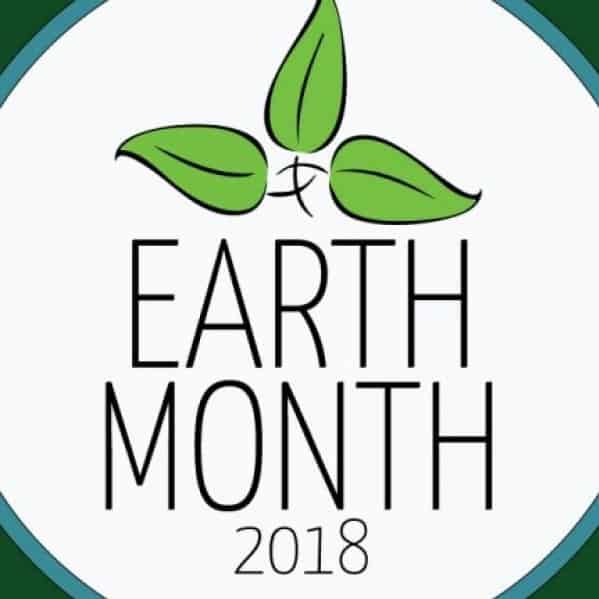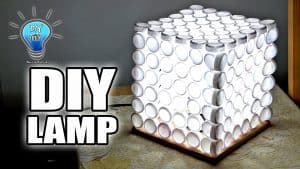This is the 48th anniversary of Earth Month® and the theme this year is Plastic Pollution. For the purposes of this blog, I’m only going to focus on marine plastic pollution. Learning about all the plastic pollution in our rivers and oceans is quite depressing and a bit scary. According to The OceanCleanup faq section – “we will never remove every last gram of plastic from the oceans.” However, they do go on to say that it is possible to facilitate a significant decrease – up to 50% – within 5 years (the web page is from 2018).
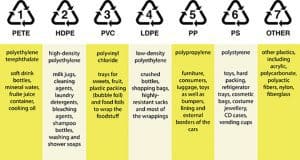 Stop and think, really think, about all the plastic used during a day. You probably start out using a plastic toothbrush and perhaps a disposable razor. Do you use prepackaged meals (cold cuts, frozen meals, pre-cut vegetables, etc), plastic utensils when packing your lunch? Stop at the local coffee shop on your way to work or class and get a cold drink in a clear plastic cup? With a straw? Stop at the grocery store and pick up a few groceries, batteries, bottled water, and use the plastic shopping bags? Head to a local sports bar and have your drink in a plastic cup? Wash your dishes with dish soap in a plastic bottle? Have a baby or toddler? How many baby bottles, bottle nipples, and pacifiers do you have? You get the idea – I could go on and on.
Stop and think, really think, about all the plastic used during a day. You probably start out using a plastic toothbrush and perhaps a disposable razor. Do you use prepackaged meals (cold cuts, frozen meals, pre-cut vegetables, etc), plastic utensils when packing your lunch? Stop at the local coffee shop on your way to work or class and get a cold drink in a clear plastic cup? With a straw? Stop at the grocery store and pick up a few groceries, batteries, bottled water, and use the plastic shopping bags? Head to a local sports bar and have your drink in a plastic cup? Wash your dishes with dish soap in a plastic bottle? Have a baby or toddler? How many baby bottles, bottle nipples, and pacifiers do you have? You get the idea – I could go on and on.
Do you think about where all the plastics go when you are done with them? Hopefully you recycle as much as you can. If you use prepackaged food in plastic containers do you wash/rinse the dishes before you recycle? (did you know if you leave food in a recyclable container and put it in a recycle bin it contaminates the entire bin and everything must be dumped in a land fill? Clean your recyclables first!)
The vast majority of the plastic waste ends up in the world’s waterways and oceans. “It is only comparatively recently that the scale of marine contamination from plastics has been realised. Since plastics are light, strong, durable, and inexpensive, their usage is massive. Coupled with the fact that they can persist for centuries and are buoyant, it is perhaps not surprising that plastics make up between 60 and 80% of all marine debris.” (Marine Pollution and Human Health, pgs 84-85)
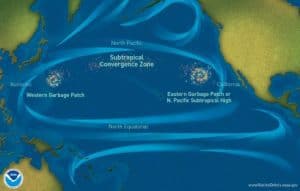
There is a sea of plastic garbage located halfway between Hawaii and California. It is called the Great Pacific Garbage Patch (GPGP). It is the largest of 5 offshore plastic garbage zones in the world’s oceans. It is three times the size of France; two times the size of Texas. In 2015, Ocean Cleanup launched a fleet of 30 ships & boats to collect samples of the plastic in the GPGP. They collected 1.2 million plastic samples, which were hand counted, sorted, and classified by type and size. It took over 2 years to complete the classification.
Charles Moore, founder of the Algalita Marine Research Foundation, discovered the GPGP in 1997. Two years later he went back with a fine-mesh net and measured the weight of the plastic in comparison the weight of the plankton. He found six times more plastic than plankton. Moore notes that on Kamilo Beach in Hawaii there are more plastic particles than sand particles – until you dig a foot down. On Pagan Island (between Hawaii and the Philippines) they have a “shopping beach. If the islanders need a cigarette lighter, or some flip-flops, or a toy . . . they go down to the shopping beach and pick it out of all the trash that’s washed up there from thousands of miles away.” (Garbage and Recycling, pg. 24).
None of this includes the sheer magnitude of sea creatures and marine birds that are killed and destroyed by the 1,000s because of the pollution. I also have not mentioned that plastic is manufactured from oil, which will eventually run out. . .
Okay, that’s the tip of the garbage-berg, so to speak. Now, what can be done? As I mentioned earlier, we will never be able to remove all the plastic from the oceans. BUT we can all have an impact on preventing the plastic pollution from getting worse. Garbage and Recycling suggests we need to reuse plastic and design plastic which can be reused – very little plastic can be melted down and molded into something else. The vast majority of plastic is contaminated with chemicals, and therefore not reusable.
There are steps that can be taken by you, as the consumer. Garbage and Recycling suggests the easiest way to make a difference is to give up plastic shopping bags and plastic water bottles – these are the largest contributors to plastic pollution. When shopping for items packaged in plastic, be aware that some items are in packaged in more plastic (or cardboard…) than is necessary. It can make it more obvious on the shelf, but is not good for the environment.
Earth Day 2018 has created resources to help individuals “take a personal journey and get ready for Earth Day 2018.” Most of us have heard the 3 Rs of Recycling: Reduce, Reuse, Recycle. Earth Day suggests the 5 Rs of Recycling:
- Reduce: Cut down on amount of plastic used. For example, carry a reusable water bottle.
- Refuse: Refuse to use the plastic – check for a non-plastic alternative. Do you need a plastic straw? Bamboo and metal straws are available.
- Reuse: Find products that are designed for multiple uses. Reusable shopping bags, waxed lined bags instead of sandwich bags. Purchase items made from recycled plastic (for instance, I own a door mat made from recycled flip flops)
- Recycle: Check with your city’s sanitation department to find out what they accept for recycling.
- Remove: This is easy. Pick up plastic trash when you see it. Participate in community clean-up days.
Garbage and Recycling suggests buying 2nd hand clothing or have a clothing swap with friends and neighbors. We don’t often think about what goes into producing our clothing. It will not only help the environment, it’s also easier on your pocketbook! It is also suggested to make art or other household projects. Try making this bottle cap lamp – find instructions here for 20 ways to reuse plastic bottles!
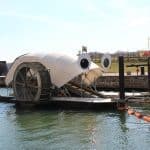
Action is also being taken on a larger scale. Technology is helping businesses and communities become more creative with ways to clean waterways. For example, Baltimore is using “Mr. Trash Wheel,” and “Professor Trash Wheel,” which were invented by sailor and engineer John Kellett. A brewery, Saltwater Brewery, in Florida has created six-pack rings which feed marine life. They are made from beer by-products (barley & wheat) and are safe for both humans and fish to ingest. Magellan Manufacturers/We Conner have door mats made from recycled flip flops. Engineer Toby McCartney has been developing discarded plastic into asphalt which is being tested in the United Kingdom.
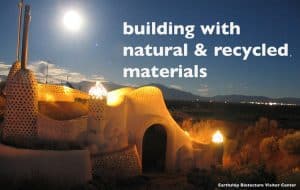
In Garbage and Recycling we learn about an American architect, Michael Reynolds, who considers tires, bottles, and cans to be “natural resources.” He has used garbage and natural resources to design and build sustainable, self-sufficient homes called, “Earthships.” They are sturdy enough to withstand a force 9 earthquake and have been described as “magical,” and “beautiful.”
In 2009, Typhoon Ketsana flooded Taguig City in the Philippines. Water Lilies were partly to blame for the flooding – they multiply quickly and plugged drainage systems. However, a month before the typhoon hit, the city launched the Water Lily Project. The project trains residents to weave water lilies into bags, slippers, and Christmas decorations, which they can then sell, thus helping the local economy, too.
Jamil Shariff, author of 50 Green Projects for the Evil Genius, suggests paying attention to, and saving packaging which is not recyclable. Save the packaging and note where it was purchased. Then, take the packaging back to the store, ask to speak with the store manager, and explain that you think it is is not recyclable and you do not feel it is your responsibility, or the responsibility of the community, to bear the cost of recycling the packaging. An alternative method (and perhaps easier!) is to write to the manufacturer of the particular product. This can be especially effective if you state that this is why you won’t purchase the item. Companies need to sell their products and consumers who refuse to buy their products get their attention.
Want to discover how small or large your carbon footprint actually is? Go here for both an individual and small business carbon calculator.
In Living Green : A Practical Guide to Simple Sustainability, author Greg Horn states: “Making small, individual changes can lead to broad, sweeping changes that will allow us to sustain ourselves for generations to come.”
Take that small, first step on your journey to help end plastic pollution and help save our planet!
*************
This video is from TheOceanCleanup
Resources:
Hester, R.E., 2011. Marine pollution and human health. Cambridge : Royal Society of Chemistry. Engineering Library GC1085 .M37 2011
Mancini, Candice, Editor. 2011. Garbage and recycling. Farmington Hills, MI : Greenhaven Press. Engineering Library TD792 .G365 2011
Barnett, Sloan. 2008. Green goes with everything : simple steps to a healthier life and a cleaner planet. New York : Atria Books. Engineering Library RA770 .B37 2008
Shariff, Jamil. 2009. 50 green projects for the evil genius. New York : McGraw-Hill Engineering Library GE195 .S47 2009
Horn, Greg. 2006. Living green : a practical guide for simple sustainability. Topanga, CA : Freedom Press. Engineering Library RA776.5 .H67 2006
The Great Pacific Garbage Patch : Making Waves: Episode 126. National Ocean Service.
Great Pacific Garbage Patch. March 29, 2018. NOAA Marine Debris Program : Office of Response & Restoration.
The Great Pacific Garbage Patch. 2018. The OceanCleanup.
Johnson, DJ, Feb. 21, 2017. 20 Ways to reuse and Recycle Empty Plastic Bottles. Budget Dumpster presents the Fill.
Earth Day 2018: End Plastic Pollution Countdown to April 22. The World’s Largest Environmental Movement. Earth Day Network.
Googly-Eyed Trash Eaters May Clean a Harbor Near You. The People v. Climate Change. National Geographic.
Wanshel, Elyse, May 31, 2016. Edible Rings on Six-Packs Feed Marine Life if They End Up in the Ocean. HuffPost, An Oath brand
United Kingdom testing durable roads made of recycled plastic. Digital Trends. Designtechnica Corporation. Date Accessed April 17, 2018
We envision a world free of plastic pollution. Algalita. Date Accessed: April 23, 2018
Other Resources:
From robotic bees to bacteria, the tech that is making for a greener tomorrow. Digital Trends : Emerging Tech. Date Accessed: April 23, 2018
Plastic Statistics : Plastic Ain’t so Fantastic. Ocean Crusaders. Date Accessed: April 18, 2018
For a list of plastics used in every day items, check this webpage from Robot Bonanaza
